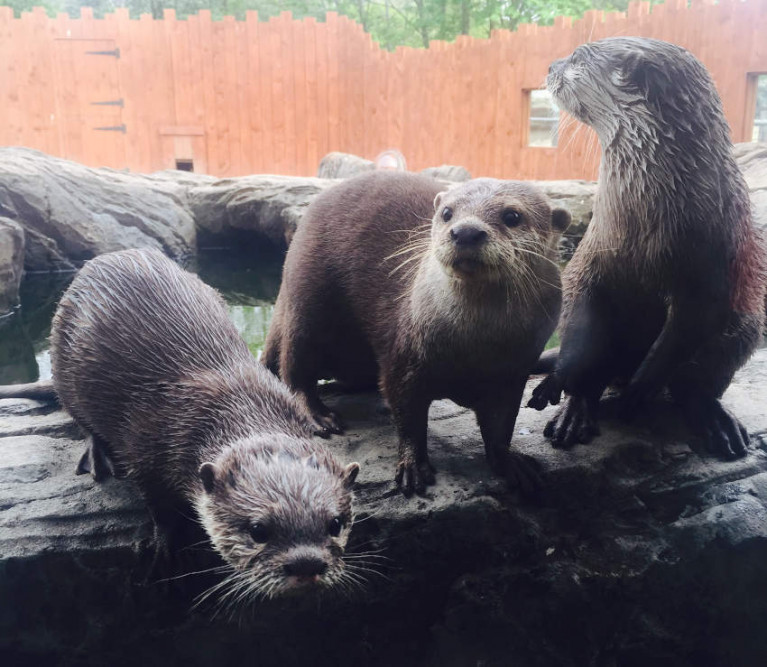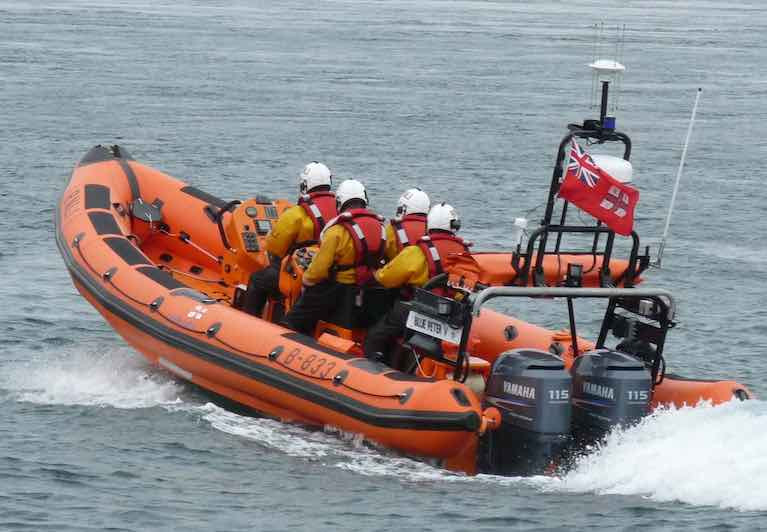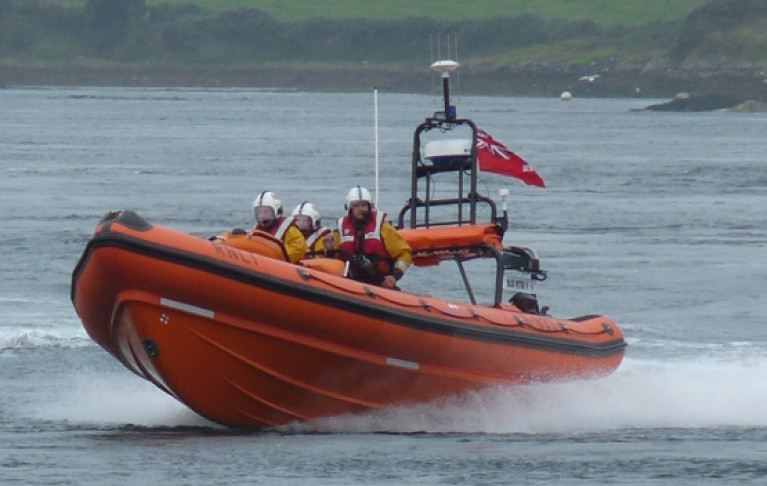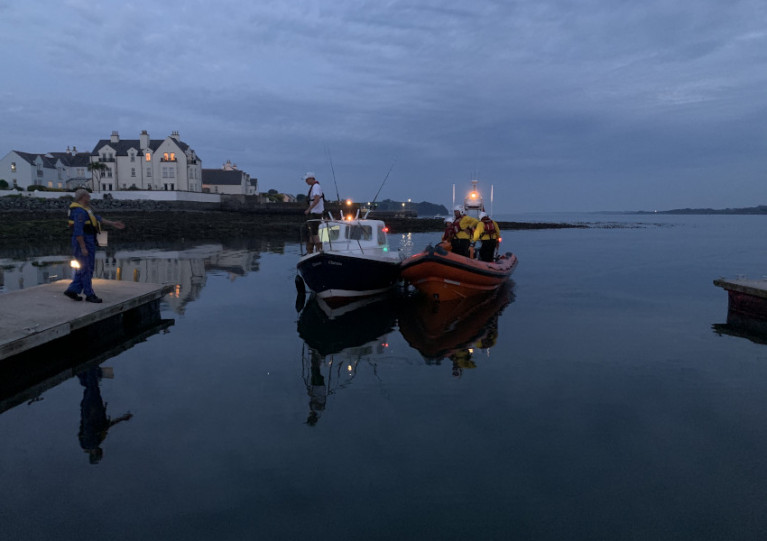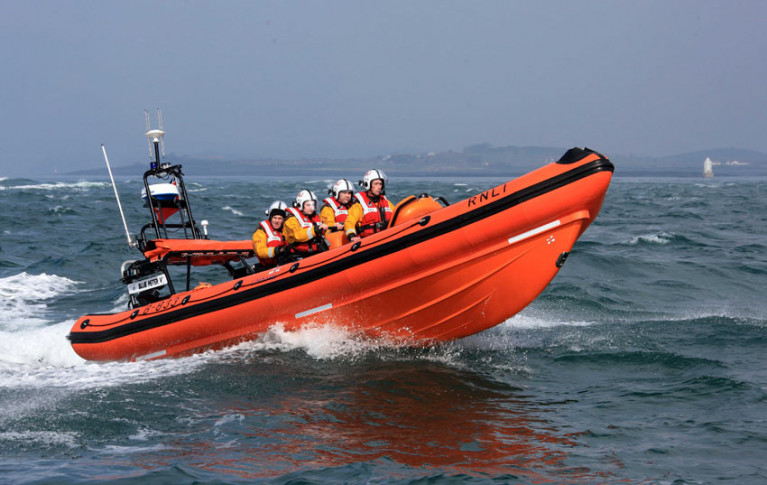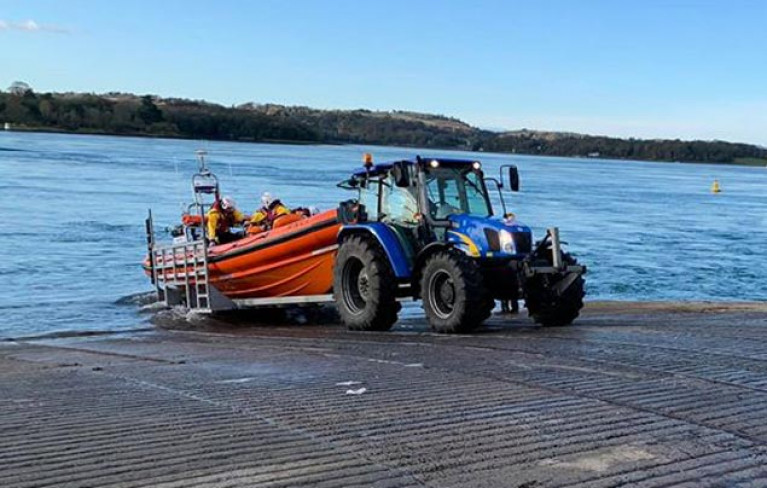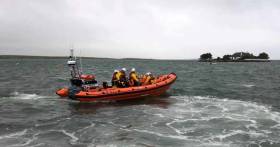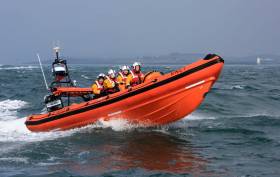Displaying items by tag: Portaferry
Portaferry’s Exploris Aquarium Faces Uncertain Future As Belfast Competitor Gets Go-Ahead
Portaferry’s Exploris aquarium may soon face competition from a £12 million competitor in Belfast’s Titanic Quarter — and a battle for its own future, as the News Letter reports.
Belfast City councillors on the planning committee gave their approval for the ‘reefLife’ project on Wednesday — despite Ards and North Down Council raising their objections with Stormont’s Infrastructure Minister.
Exploris has faced financial challenges for years, and received an emergency lifeline from the Executive after it was earmarked for closure in 2013.
Now it’s feared the new Belfast aquarium plans would have “wider ramifications” for the Co Down seaside town, and have a “a devastating impact” on Exploris and its marine wildlife sanctuary on the Ards Peninsula.
The News Letter has more on the story HERE.
Portaferry RNLI Rescues Two Sailors after 36ft Yacht Gets into Difficulty on Strangford Lough
Portaferry RNLI came to the aid of two sailors whose 36ft yacht got into difficulty on Strangford Lough this morning (Tuesday 25 August).
The volunteer crew were requested to launch their inshore lifeboat at 9.55 am following a report from Belfast Coastguard that a 36ft yacht with two people onboard was dragging its anchor and drifting towards the shore.
The lifeboat helmed by Fergal Glynn and with crew members Ian Sands, Josh Boyd, and Rosalind Watret onboard, launched immediately and made its way to the scene.
Weather conditions at the time were poor with heavy rain, a southeasterly Force 7 wind and a choppy sea. Visibility was fair.
Due to the weather conditions, a decision was made to also request the all-weather lifeboat from Donaghadee RNLI. A local vessel also offered its assistance.
Once on scene, Portaferry RNLI assessed the situation and observed that the yacht was drifting close to shore off Taggart Island. The man and woman onboard were safe and well. A lifeboat crew member was transferred to the yacht where they took a line to the vessel to take the weight off the anchor. Once this was completed the inshore lifeboat proceeded to tow the yacht back to Killyleagh. Donaghadee RNLI was subsequently stood down.
Speaking following the call out, Philip Johnston, Portaferry RNLI Lifeboat Operations Manager said: ‘Weather conditions at sea were not good this morning and the crew onboard the yacht did the right thing calling for help when they knew they were in difficulty and we would like to wish them a safe onward journey.
‘Ahead of sailing, we would remind people to always respect the water. Always wear a lifejacket and always have a means of calling for help or signalling and ensure everyone onboard knows how to use it. Always check the weather forecast and tide times. Make sure someone on the shore knows where you are going and when you are due back. Should you get into difficulty, dial 999 or 112 and ask for the Coastguard.’
Portaferry Lifeboat Launches To Kayaker In Difficulty
Portaferry RNLI rescued a kayaker who got into difficulty on Strangford Lough on Wednesday night (5 August).
The volunteer crew were on the scene with the inshore lifeboat just eight minutes after launch, following an alert from passers-by who heard the kayaker calling for help at Walter Rock in the Strangford Narrows.
Directed by those members of the public, the lifeboat reached the casualty who had been in the water for between 15 and 30 minutes, clinging to his upturned kayak.
He was taken onboard the lifeboat and made comfortable before being returned to shore and passed into the care of Portaferry Coastguard. The lifeboat crew then returned to the Narrows to recover the kayak.
Speaking after the callout, Portaferry RNLI press officer Jordan Conway said: “We would like to commend the members of the public who raised the alarm last night which ensured we reached the casualty in good time.
“As the summer season continues, we remind everyone planning a trip to sea to always respect the water.
“Always carry a means of calling for help and keep it within reach. Wear a personal flotation device and check the weather and tides.
“Tell someone where you are going and when you are due back and always wear appropriate clothing for the conditions and your trip.”
Portaferry Lifeboat Launches Twice In Three Days To Reports Of Strangford Lough Breakdowns
Portaferry RNLI launched twice in three days to reports of broken down boats in the same area of Strangford Lough.
Portaferry’s volunteer crew launched initially on Thursday evening (25 June) at 9.50pm to assist a five-metre cabin cruiser at the entrance to Strangford Lough which had suffered engine failure after a fishing trip.
The inshore lifeboat towed the vessel to Portaferry Marina, handed the vessel to the local coastguard and assisted with berthing.
Portaferry’s lifeboat volunteers launched again yesterday afternoon (Saturday 27 June) at 5.07pm to tow to safety a seven-metre RIB which had suffered engine failure at the south end of Rock Angus, at the beginning of Strangford Lough.
Commenting on the callouts, lifeboat helm Colin Conway said: “As this is a busy period for Portaferry RNLI, we ask you to remember to have all your communication devices in good working order, to follow safety advice to stay as safe as you can, and always to respect the water.”
As Father’s Day (Sunday 21 June) wound down, Portaferry RNLI’s lifeboat volunteers were paged following reports of an upturned boat off Ardglass in Co Down, Northern Ireland.
The crew launched promptly at 9.17pm in cloudy but good visibility conditions and swiftly made their way to Ardglass.
Arriving on scene around half an hour later, the crew began searching the area for the upturned boat — but soon discovered that the sighting was in fact of a dead whale that was floating on the surface of the Irish Sea.
Commenting on the callout, deputy launching authority Graham Edgar said: “This was an unfortunate conclusion of the search. However we are glad that no lives were in danger.
“Belfast Coastguard will report the whale as a hazard to navigation to ensure all other vessels in the area will be aware of the remains.”
Portaferry RNLI came to the aid of two people on jet skis who got into difficulty at Cloughy Bay in Co Down yesterday afternoon (Sunday 7 June).
Portaferry’s volunteer crew launched the inshore lifeboat promptly at 3.14pm and made their way to the scene in sunny conditions with good visibility and a Force 4 northerly wind.
Arriving 11 minutes later, the crew noticed two people in the water and hanging on to their jet skis, along with a kayaker who had rowed out to assist but in doing so had gott into difficulty.
The volunteer crew recovered all three people out of the water and took them aboard the lifeboat, bringing them to safety on the shore of Strangford Lough.
Yesterday, Portaferry RNLI volunteer crew were requested to launch at 1225 to reports of a person in the water clinging to a small craft at Greyabbey Bay on Strangford Lough in Northern Ireland.
Greyabbey is a small village about 11 miles north of Portaferry on the eastern shore of the lough.
The crew launched in good conditions and headed towards the casualty position as given On approaching the lateral marks at Kircubbin, the coastguard advised the lifeboat to stand down as the person had self-recovered.
They returned to the station and subsequently were asked to launch again at 1430 but on arrival at the station were stood down by the Coastguard.
All those involved in the incidents are safe and well.
Portaferry RNLI Assist Workers Stranded on Island in Deteriorating Weather Conditions
Portaferry RNLI came to the aid of three people stranded on Trasnagh Island near Whiterock at Killinchy on the western shore of Strangford Lough this afternoon, as the weather deteriorated.
Portaferry’s volunteer crew launched promptly at 1.26 pm and made their way to the island and arrived on scene at 1.45 pm, in fair but rainy weather conditions and easterly winds. The sea state was moderate.
When on scene, the volunteer crew transferred the three workmen off the island, where they had been working since the early hours of the morning. As the weather had got worse, the small boat that they had used to get out to the island was not suitable to complete the return journey to shore. The lifeboat crew took the three workmen to shore, where they were met by the local coastguard team.
Commenting on today’s call out, Graham Edgar, Portaferry RNLI Deputy Launching Authority said: ‘While not in any immediate danger, the men certainly took the right course of action today calling for help once they realised that they could not get back to shore. We were delighted to help and would urge anyone considering going to sea to take all necessary precautions and respect the water.’
Five Crew Rescued From Fishing Boat Aground At Ardglass Harbour
Five crew were rescued from a fishing vessel that ran aground on rocks on approach to Ardglass Harbour early yesterday morning (Wednesday 23 October).
Portaferry and Newcastle RNLI’s volunteer lifeboat crews launched to assist after a Mayday call from the 24-metre vessel, which had been drifting towards Phennick Point outside the harbour.
The Belfast Telegraph reports that the boat, the Cork-registered Dillon Owen, was attempting to enter the harbour to land its herring catch when it quickly lost powe
As the lifeboats proceeded towards Ardglass, the fishing vessel was stuck on the rocks and had begun taking on water. The Dublin-based Irish Coast Guard helicopter Rescue 116 was also scrambled to the scene carrying extra pumps.
Following a dynamic risk assessment between the lifeboats and fishing boat skipper, an attempt was made to tow the vessel off the rocks.
But due to worsening weather and tidal conditions, it was decided after numerous attempts by the Newcastle lifeboat coxswain to evacuate the crew of the vessel instead — with Rescue 116 airlifting them to safety upon its arrival.
Speaking after the rescue, Newcastle RNLI coxswain Nathan Leneghan said: “This morning's rescue was a success due to multi-agency teamwork with our colleagues in the Irish Coast Guard, volunteers at Portaferry RNLI and Portaferry and Newcastle coastguard teams. Thankfully this was positive outcome, and all five fishermen are safe and well.”
Kevin Quigley of the NI Fishery Harbour Authority said the fishing vessel remained listing “very badly” at the harbour and further attempts would be made to refloat it.
Portaferry RNLI Celebrates 40 Years Of Lifesaving
Portaferry RNLI celebrated the lifeboat station’s 40th anniversary this past weekend with a party and presentation evening for crew members and their families.
During the course of the evening, the crew paid thanks to past and present members for their dedication and hard work over the last 40 years.
Portaferry lifeboat station owes its origins to an RNLI lifeboat station that was established in 1884 in the village of Cloughey, Co Down. The first lifeboat, called The Faith, was commissioned a short while after in 1885.
With the introduction of fast inshore lifeboats that were capable of making way against strong tidal currents such as those experienced in the Strangford Narrows, it was decided in 1979 to place a single-engine C class lifeboat in Portaferry for evaluation.
The lifeboat quickly proved to be a success and a twin engine D class was commissioned, before the station was officially established on 1 May 1980. The station was upgraded to 24-hour all-year operation in 1982.
The past 40 years have seen huge changes in the technology and design of the boats and the personal safety equipment worn by the crew.
Portaferry now operates a B class Atlantic 85 lifeboat known as Blue Peter V. Portaferry is one of seven Blue Peter RNLI stations, and the only one in Ireland, whose lifeboats have been sponsored by the world's longest-running television programme for children.
Presentations were made on the evening to past and present crew members for their hard work and commitment over the last four decades.
Lenny Lawson, Graeme Ellison and Billy Ellison were awarded certificates from the RNLI for their service of the many different roles they held within the station.
John Murray Snr, Pat Browne and Mrs Brownlow were presented with a present as a token of thanks from the crew for all their hard work and efforts in the roles they play in the fundraising guild team and throughout the station in the past 40 years.
Colin Conway and John Murray Jnr were presented with RNLI medals and a present from the crew to acknowledge their long service awards for 20 years and 40 years respectively.
The evening was enjoyed and attended by crew members, family and other members of the different teams within Portaferry lifeboat station.


























